Another day, another brewery. The Czech Republic has so many famous breweries, we figured it would be rude of us not to visit a few while we’re here. Last week we’d been to visit the Pilsner Urquell brewery in Pilsen, the birthplace of Pilsner-style beer. This time we were in České Budějovice (Budweis in German), home to Budweiser Budvar brewery. Say Budweiser and many people may think of the American beer of the same name, but actually the Czech version is the original – the brewing tradition in this part of the world goes back to the 13th century. The Czech and American companies have endured a protracted legal battle over the use of the name; the current compromise is that the Czech version is sold as Budweiser in the EU and most of the world, but it goes by Czechvar in Canada and the United States.
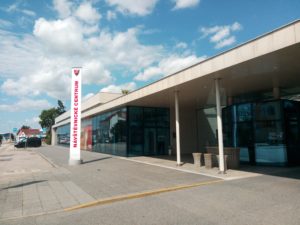
Visiting the Budvar brewery was a much simpler process than some other breweries we’ve been to recently. No booking required, just turn up on the day and pay your 150 Kč (around £5). There are two tours a day during the summer months (just one the rest of the year), and you can choose between Czech, English and German-speaking guides. We arrived about half-an-hour early, so we had time to check out the gift shop and read some of the information boards in the lobby. One of these contained a telling quote from Adolphus Busch, founder of the American company: “The Budweiser beer is brewed according to the Budweiser Bohemian process. The idea was simply to brew a beer similar in quality, colour, flavour and taste to beer then made at Budweis, or in Bohemia”. Seems pretty conclusive that the Czech version came first!
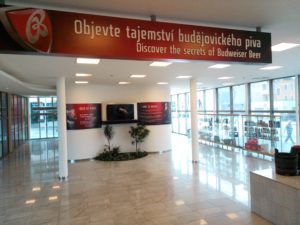
Eventually 11 o’clock rolled around and our guide arrived with our hi-vis jackets. I’m not sure whether she’d been unexpectedly drafted in at the last moment, or whether it was “bring your child to work” day, but she also had her toddler in tow to accompany us round the brewery (to the little girl’s credit, she was very well behaved – I think she may have done this before!). The tour started, as these things tend to, with a brief history of Budvar. The brewery began in 1895 when České Budějovice’s smaller brewers merged into one large operation. Nationalisation followed during the post-war Communist era and it remains state-owned to this day – an interesting concept in these times of privatisation and profit-chasing. Today there are 650 staff at the brewery, around one-third of whom work on the brewing side.
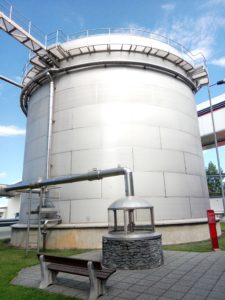
We made our way outside to the first stop of the tour, the wells. Good quality water is key to brewing excellent beer – after all, it makes up around 95% of the finished product. Budvar draw their water from deep underground, a depth of around 300 metres. This water may be several thousand years old but it comes out of the ground so pure that it needs no filtration or cleansing. It flows through huge pipes to the brew house, which was where we headed next. On the way there though, we came across thousands of empty bottles piled high. The bottles come here from Dubí, near the German border; apart from its glass production, the town is apparently also famed for its rampant prostitution. If just one bottle arrives damaged the whole consignment is smashed and sent back to be melted down.
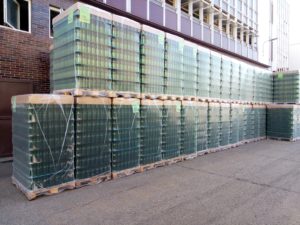
The brewers at Budvar must certainly be some of the fittest around; there are no fancy lifts in the brew house here, just plenty of stairs. We climbed our way up to a balcony overlooking the vast copper mash tuns where the brewing process begins. Originally brewers chose copper for its conduction properties, but today its use is more a matter of style and tradition. The well water we’d seen outside is boiled for 5 hours with fine Moravian malt and quintessentially Czech Saaz hops. Once the wort cools and the yeast has been added, it travels to the towering fermentation vessels outside. Here it stays for a few days before making its way down to the cellars for maturation.
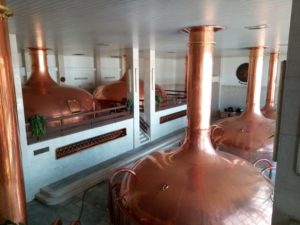
Cellars are fast becoming my favourite part of a Czech brewery tour. Firstly, they are always the coolest part of the brewery. At Budvar the temperature hovers around 2°C, a welcome break from the summer heat. Here, the beer sits in lagering tanks for up to five months before heading to the packaging plant. However, even better than the cool temperatures is the fact that the cellars are where you get to sample the beer! Three-month matured beer is poured straight from the tank into Budvar-branded plastic cups. Some may say drinking beer out of plastic is sacrilege, but it didn’t seem to do this beer any harm. Fresh from the tank, it was full of flavour – crisp malt alongside earthy, grassy hops.
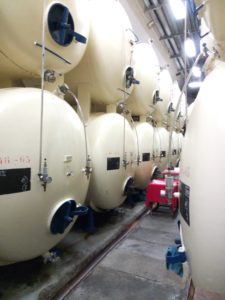
Once the beer is ready for sale, its next stop is the packaging plant. This was our next destination too, back up several flights of stairs and across the footbridge overlooking the railway platform from where the beer travels to all corners of the globe. Unlike many private breweries, which have by and large shunned rail freight in favour of other methods, the Budvar brewery remains connected to the national railway network. In total, 1.7 million hectolitres of beer left the brewery last year. 68% of this remains in the Czech Republic, with the rest going abroad. Budvar is one of the biggest exporters of Czech beer, second only to Pilsner Urquell. The UK, Austria and Germany are the brewery’s biggest external markets; in fact, in Germany it is the best-selling foreign beer.
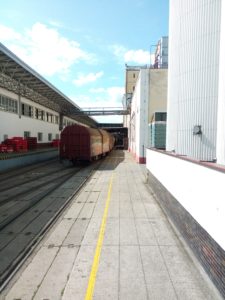
Inside the plant, the beer is packaged into the various formats; 60% goes into bottles, 30% in kegs, 9% in cans and 1% into tanks for the local pubs offering fresh, unpasteurised beer. As you might expect from a place that brews almost 900,000 pints of beer a day, packaging is a huge exercise. Two giant bottle washers clean 88,000 bottles an hour between them; these bottles move to the filling station, before travelling through the pasteuriser and onto the pallet machine. Our guide wasn’t sure whether the plant would be running on a Sunday (the production side of the brewery often closes at the weekend, another interesting side effect of state-ownership) but luckily we were able to see the whole thing in action.
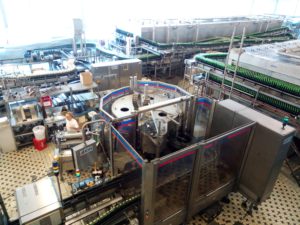
Our tour over, we decided to head next door to the brewery tap room, Budvarka, to sample a couple more beers. The bar was pretty quiet on a Sunday lunchtime, so we found a table and perused the beer list. There were six different beers on tap, plus a couple more available in bottles. We got four samples between us, starting with the B:CLASSIC. The lighter version of the beer we’d tried in the cellar, this one unfortunately wasn’t really to my taste; a little too sweet and not enough hop bitterness. Number two, the B:SPECIAL Kroužek, was much better however. Brewed with extra yeast, it was still definitively a lager but with a pleasant hint of a Belgian beer about it.

Next came B:DARK, the brewery’s dark lager. This was completely unlike other Czech dark beers we’ve tried, which tend to be a little too sweet. Rich coffee notes from the roasted malt dominated the aroma and flavour, almost like a porter. Last up, we got brave and sampled a bottle of the imperial lager, B:STRONG. At 7.5% it was unsurprisingly very boozy, with a strong smell of green hops. It wasn’t my favourite beer of the four, but not the worst strong lager I’ve ever had. We paid up and headed into town for some lunch, both agreeing that this was one of our favourite brewery tours we’d been on. Now where might I find some more of that dark lager?
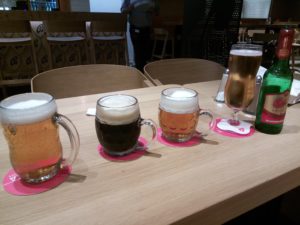
Would I recommend? Definitely. This was one of the best brewery tours we’ve done – you get to see the beer’s journey in order from the well water to the final product. Our guide was friendly and informative, and moved us along at a comfortable pace. The brewery museum (also included in the ticket price) is worth a look too, especially the hilarious short film documenting the battle for the Budweiser name.
How long do I need? The tour itself lasted just over an hour, but if you’re planning to visit the museum too then leave an extra 30 minutes or so. How long you spend in the bar next door is up to you!
How do I get there? The brewery is a 5-minute walk from České Budějovice North station (severni zastávka). However, it’s worth noting that this is a request stop with very infrequent service. From the town’s main railway station, you can either get a bus or it’s about 35 minutes’ walk.




Comments
This is so awesome!! As I write this, the Budweiser Clydesdales are making appearances in the Kansas City area. This is so interesting!! I am 50% Czechoslovakian…my maternal grandparents came over through Ellis Island from Czechoslovakia in the early 1900’s. I’ve always wanted to visit there and this is one more interesting thing to see!! Thank you for sharing this wonderful information!! The reason I mentioned the Clydesdales in the Kansas City area is because that’s where I live.
Author
Hi Barbara, great to hear you enjoyed reading our article! Would definitely recommend visiting the area if you get the chance.